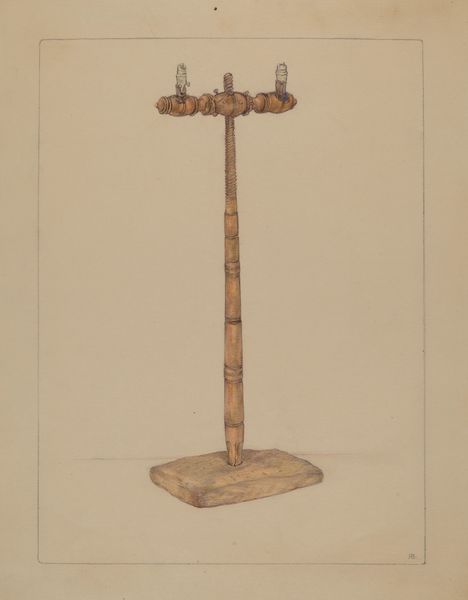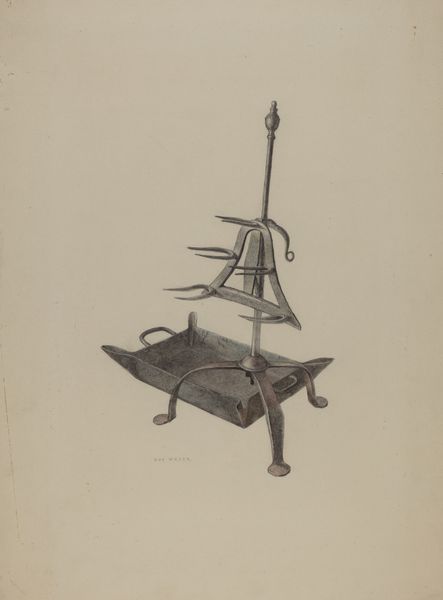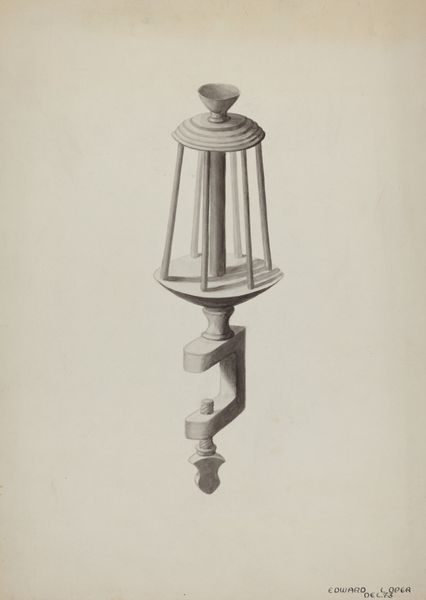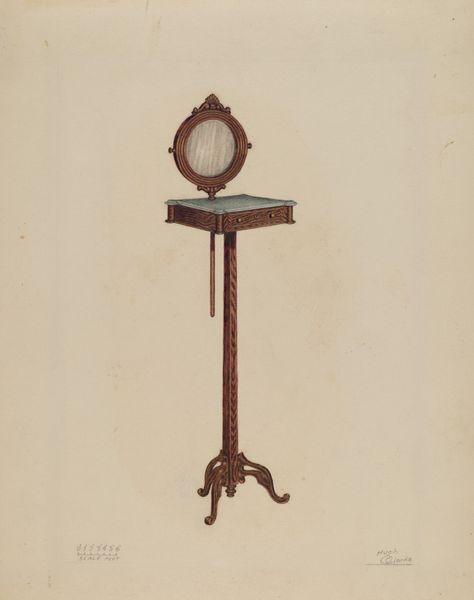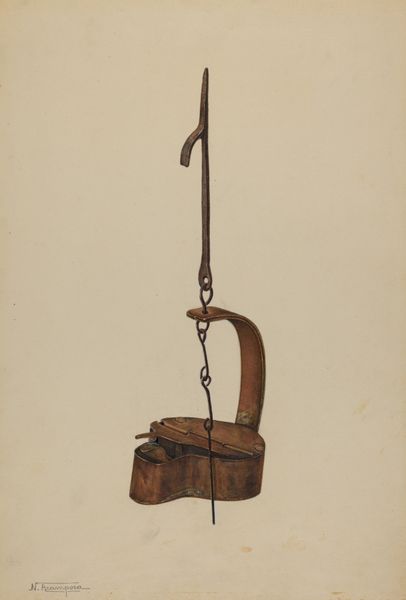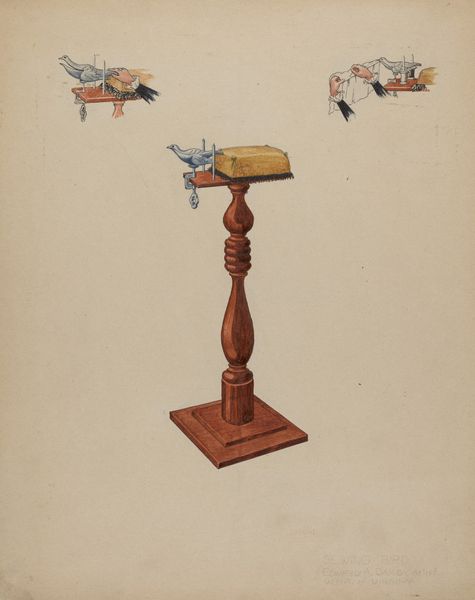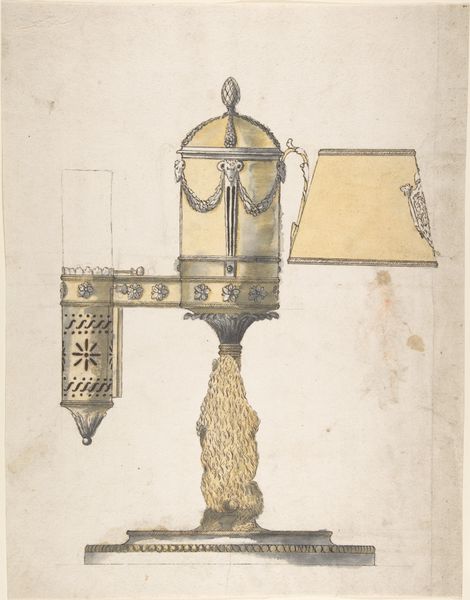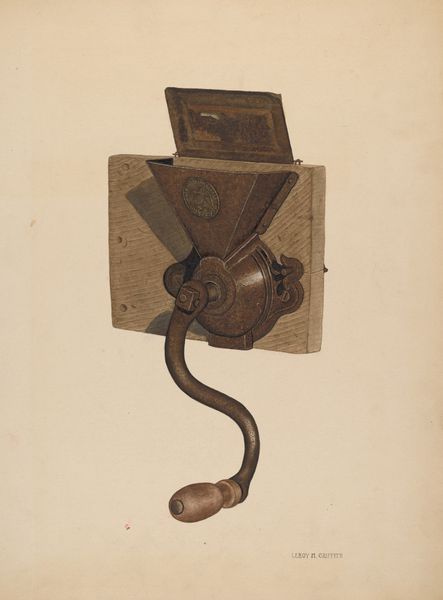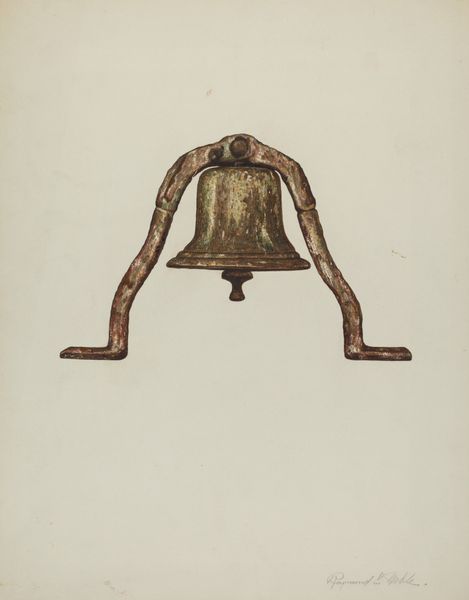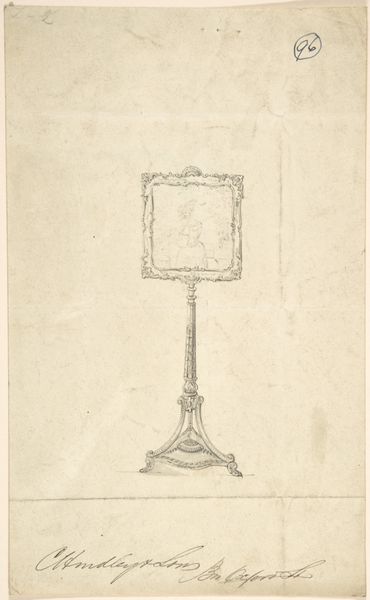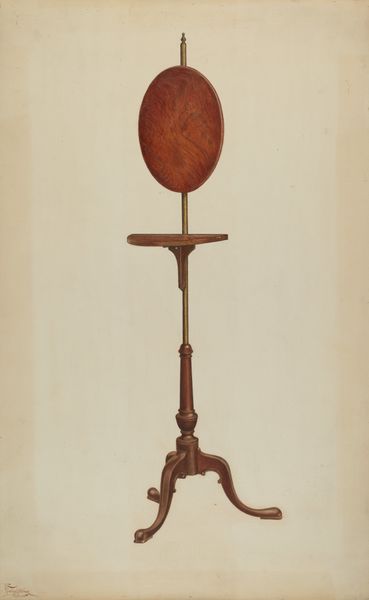
drawing, watercolor, ink
#
pencil drawn
#
drawing
#
aged paper
#
toned paper
#
light pencil work
#
pencil sketch
#
charcoal drawing
#
watercolor
#
ink
#
pencil drawing
#
ink colored
#
watercolour illustration
#
watercolor
#
realism
Dimensions: overall: 35.7 x 27.9 cm (14 1/16 x 11 in.) Original IAD Object: 75" high; 27 1/2" wide
Copyright: National Gallery of Art: CC0 1.0
Editor: This is "Music Stand," a drawing made around 1937 by Albert Pratt, using watercolor and ink. The stand looks rather elegant, but simple in its design. What do you notice about the materials or production of this piece? Curator: The apparent simplicity is deceptive. Consider the process – the selection and treatment of the paper, likely chosen for its ability to absorb the watercolor and ink in a specific way. Notice the meticulous detail in rendering the wood grain, suggesting a craftsman's pride, maybe even mass production for a burgeoning consumer culture interested in music within the home. Editor: Mass production? But it looks so handmade. Curator: Precisely. Pratt is representing an object that would have been reproduced, examining its cultural significance beyond its function. How accessible were instruments, music, and even something as seemingly simple as a music stand at the time? The materiality suggests more than meets the eye. Do you think the artist is glorifying the product, or perhaps offering a more critical perspective? Editor: I hadn't considered the consumerism aspect. I suppose it could be either. Perhaps by focusing on the single object, it's a statement about mass production creating multiples of things. Curator: Or maybe how a domestic scene is crafted by mundane objects. What do the choice of a muted watercolor and the intimate scale of a sketch, compared to a polished, commercial print, suggest about the labor invested in both the production and its artistic representation? Editor: So, we’re not just looking at a music stand, but the whole system around its creation and consumption! It definitely encourages a deeper engagement. Curator: Precisely. The beauty resides not merely in the object, but in understanding its context. I think paying more attention to the production processes offers a way to analyze the art that challenges notions of good or bad art and also how it’s appreciated.
Comments
No comments
Be the first to comment and join the conversation on the ultimate creative platform.

